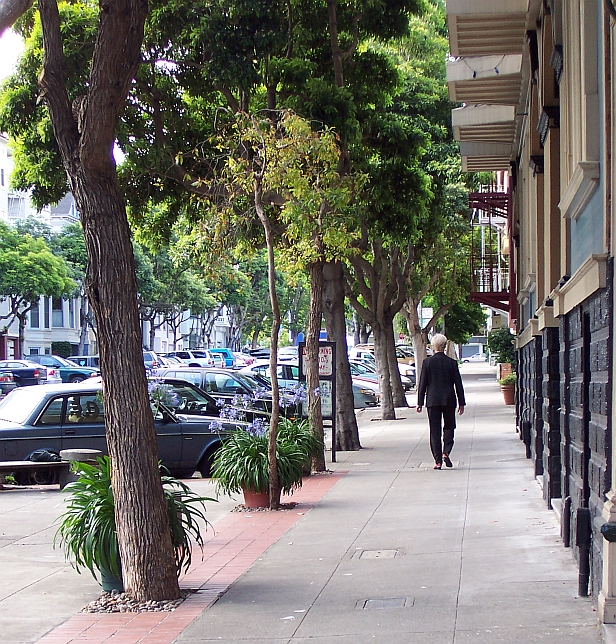At Atlantic Cities, Sarah Goodyear puts her finger on a truth universally acknowledged by everyone in the world except WalkScore: “A mile in an American suburb is a lot longer than a mile in Rome.” In other words, walking 10 city blocks is very different from walking a mile up the side of a highway with intermittent sidewalks. A new tool, Walk Appeal, is trying to take that very real difference and quantify it.
Steve Mouzon, the tool’s creator, explains that distance is only one of the factors that determine how far people are willing to walk. Imagine, for instance, that you’re at a parking-lot-heavy shopping center:
As we all know, if you’re at Best Buy and need to pick something up at Old Navy, there’s no way you’re walking from one store to another. Instead, you get in your car and drive as close as possible to the Old Navy front door. You’ll even wait for a parking space to open up instead of driving to an open space just a few spaces away… not because you’re lazy, but because it’s such a terrible walking experience.
Walking down an empty street with no people and lots of cars is boring and often dangerous. Walking down a city street with lots of other stuff on it is interesting. Your destination feels closer, and walking feels more worthwhile — a journey as pleasant as the destination promises to be. When the on-foot journey sucks, though, it’s no surprise that people drive. Accordingly, Walk Appeal gives areas different standards for walkability — something two miles away is still walkable in London, for instance, but for a subdivision, walkability tops out at 250 feet.
The best outcome might be for the WalkScore people to build Mouzoni’s ideas into their web application. Then you’d be able to see at a glance not only whether it’s physically possible to walk to things from your location, but whether you’d actually want to.



